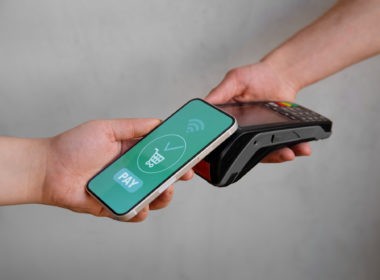Contrary to common belief, cold emailing plays a crucial role in B2B sales. In 2021, the average return on investment for email marketing was an impressive 3,800%, meaning that for every $1 spent, $38 was earned .
Although the ROI is significant, achieving it requires strategic effort. The primary aim of a well-crafted cold email is to introduce the business or sender to the recipient and effectively initiate a new business relationship. This relationship-building process demands careful attention to personalization and timing, as prospects are increasingly selective about which emails they engage with. Personalized cold emails receive up to 50% higher open rates than generic ones, making it crucial to invest time in research and customization. Since there is no one-size-fits-all method for sending cold sales emails, various B2B marketing strategies can be implemented to optimize open and response rates.
This article outlines how to write cold sales emails and provides templates for B2B marketers.
When Is Cold Email Appropriate?
Cold emails are a strategic way to initiate and maintain business relationships. They allow interaction with potential clients who may have little to no prior knowledge of the sender’s business. The main purpose of a cold email is to build a business relationship with a stranger, gradually “warming up” these leads.
Studies of personalized emails suggest that the best time to send cold sales emails is between 6-9 a.m. PST on Monday, with Tuesday being a close second.
How to Write a Cold Sales Email
Follow these steps to create an appealing cold sales email:
Write an Appealing Subject Line
The subject line is crucial as it creates the first impression of the business. To write a compelling subject line, follow these rules:
- Consider what the recipient will gain from opening the email. Does it address their pain points or needs? Write it with them in mind.
- Personalize the subject line to ensure the recipient that the email is not spam.
- Enhance curiosity by using a little flattery.
- Avoid being too formal; sound human rather than robotic.
- Ensure the subject line is consistent with the rest of the email.
Personalize Your Email
Including the recipient’s first name and company details builds trust and increases the chances of conversion. Add a line about how the product or service can solve their problem or add value. The introduction should be concise, about 2-3 lines, focusing on the recipient, the sender’s expertise, achievements, and company.
Get Straight to the Critical Points
Recipients are busy and unlikely to read long sales pitches. Highlight the most critical points and the value being offered. Emphasize the benefits of the products rather than just the features. Use short sentences and paragraphs, and incorporate bullet lists to make the email easier to read.
Write a Clear Call to Action
A clear call to action (CTA) is crucial. Without it, clients might not convert. The CTA should prompt a specific action, such as providing feedback, scheduling a meeting, or responding quickly. Keep it simple and clear.
Cold Sales Email Templates for B2B
Effective B2B cold emails initiate multiple sales interactions. They introduce a business and its offerings, create a positive first impression, and build rapport. Here are three templates:
B2B Cold Email Template for Finding the Decision-Maker
When unsure who to contact, ask for guidance. This template demonstrates that effort has been made to research and match the product or service to the client’s business model, identifying the best contact person for the opportunity.
Subject: Seeking Guidance on the Right Contact Person
Hi [Recipient’s Name],
I hope this email finds you well. My name is [Your Name], and I am with [Your Company]. We specialize in [briefly describe your product or service], which has been highly beneficial for companies like [recipient’s company name] in [mention a specific benefit or solution your product provides].
I have been researching your company and believe there is a potential for us to collaborate. However, I am not sure who the best person to discuss this opportunity with would be. Could you please direct me to the appropriate contact?
Thank you for your time and assistance.
Best regards,
[Your Name]
[Your Position]
[Your Contact Information]
B2B Cold Email Template to Build Rapport
If someone is observed engaging with specific content, follow up by offering a resource related to that interest. This approach helps build rapport without immediately selling, such as by sending an eBook or inviting them to a webinar.
Subject: Resource Recommendation Based on Your Interest in [Topic]
Hi [Recipient’s Name],
I noticed that you recently engaged with our content on [specific topic]. As someone interested in this area, I thought you might find our latest resource helpful. We have just released an [eBook/webinar/guide] on [related topic], which offers valuable insights and actionable strategies.
Here is the link to access it: [insert link]
I would love to hear your thoughts on it and discuss how we might be able to support your work at [recipient’s company name].
Looking forward to connecting.
Best regards,
[Your Name]
[Your Position]
[Your Contact Information]
B2B Cold Email Template to Establish Value
When offering value, highlight a relatable problem or issue for the prospect. Draw a clear picture of the problem and its consequences, then present a solution that prevents this outcome and adds value.
Subject: Helping You Solve [Specific Problem]
Hi [Recipient’s Name],
My name is [Your Name], and I am reaching out from [Your Company]. We have been working with companies like [recipient’s company name] to address [specific problem or pain point].
One of the common challenges we see is [describe the problem], which can lead to [negative consequence]. Our [product/service] offers a solution by [briefly explain how your product/service solves the problem].
I would be happy to discuss how we can help [recipient’s company name] overcome this challenge and achieve [mention a positive outcome or benefit].
Would you be available for a quick call next week to explore this further?
Best regards,
[Your Name]
[Your Position]
[Your Contact Information]
Conclusion
Mastering B2B cold email strategies goes beyond mere interaction; it involves strategically unlocking new connections. This article has highlighted the importance of cold emailing, the optimal times to send emails, and a step-by-step guide for writing cold sales emails along with templates. Consider cold emails as a tool to initiate communication and build lasting business partnerships. Transform cold emails from simple introductions into opportunities for robust business growth and relationship-building.












